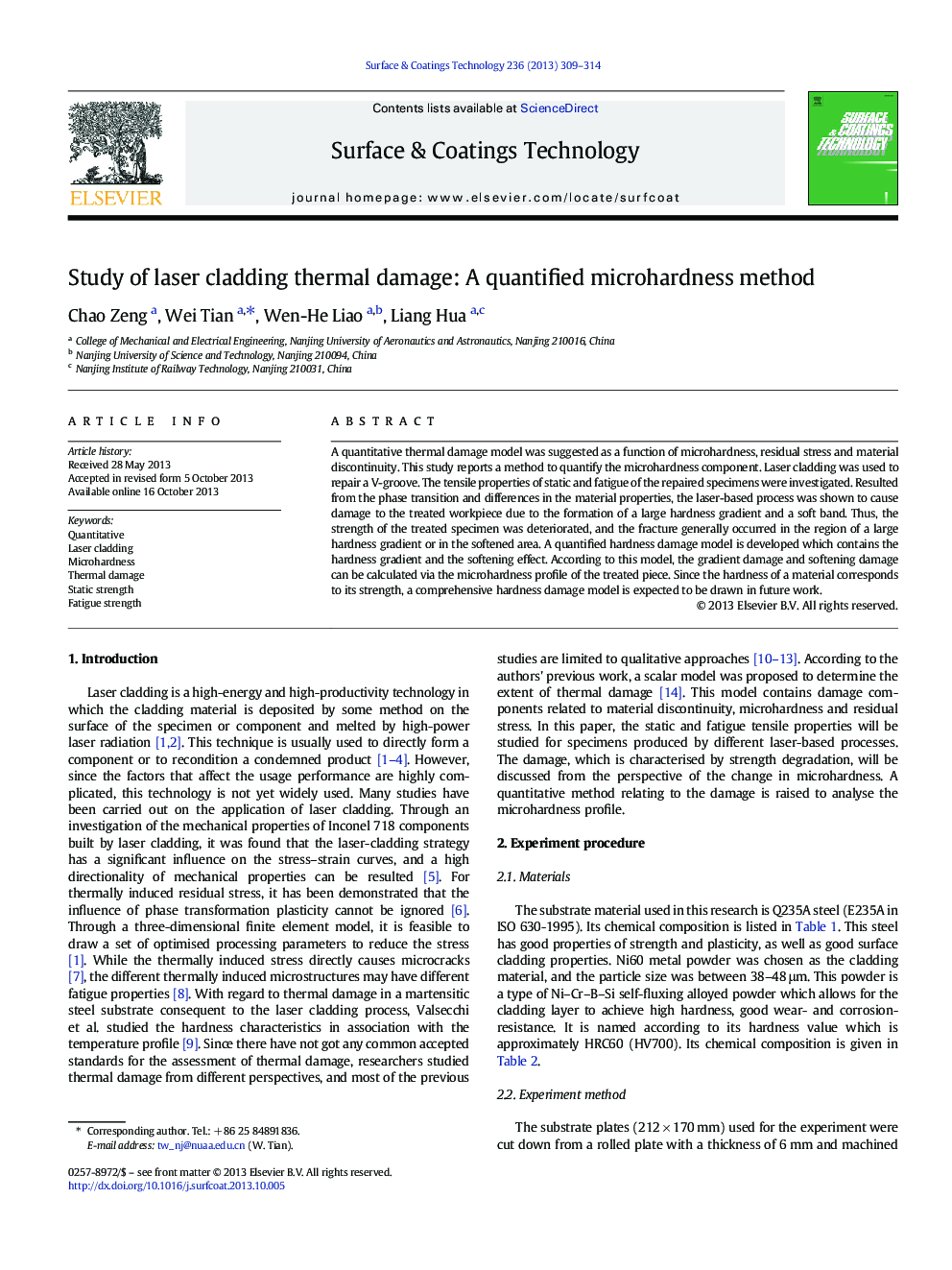| Article ID | Journal | Published Year | Pages | File Type |
|---|---|---|---|---|
| 8028969 | Surface and Coatings Technology | 2013 | 6 Pages |
Abstract
A quantitative thermal damage model was suggested as a function of microhardness, residual stress and material discontinuity. This study reports a method to quantify the microhardness component. Laser cladding was used to repair a V-groove. The tensile properties of static and fatigue of the repaired specimens were investigated. Resulted from the phase transition and differences in the material properties, the laser-based process was shown to cause damage to the treated workpiece due to the formation of a large hardness gradient and a soft band. Thus, the strength of the treated specimen was deteriorated, and the fracture generally occurred in the region of a large hardness gradient or in the softened area. A quantified hardness damage model is developed which contains the hardness gradient and the softening effect. According to this model, the gradient damage and softening damage can be calculated via the microhardness profile of the treated piece. Since the hardness of a material corresponds to its strength, a comprehensive hardness damage model is expected to be drawn in future work.
Related Topics
Physical Sciences and Engineering
Materials Science
Nanotechnology
Authors
Chao Zeng, Wei Tian, Wen-He Liao, Liang Hua,
